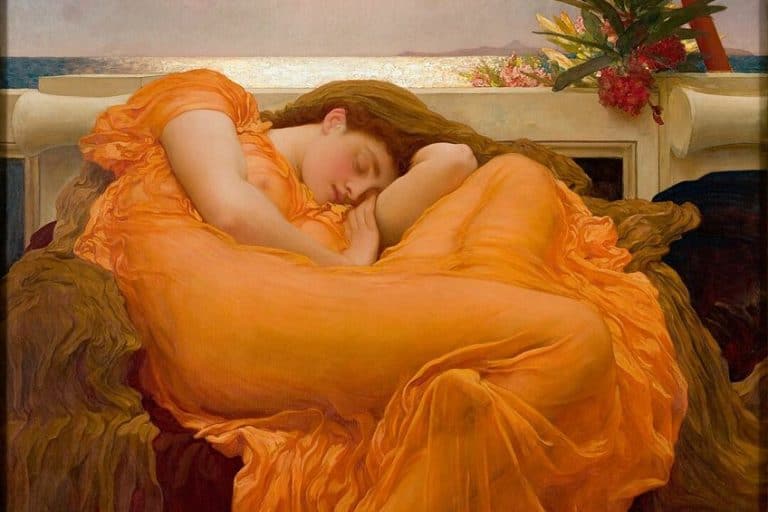“I Wandered Lonely as a Cloud” by William Wordsworth – Analysis
The work of William Wordsworth has typically come to be seen as some of the quintessential Romantic poetry, and I Wandered Lonely as a Cloud is no exception to that. Today, we will have a look at I Wandered Lonely as a Cloud by William Wordsworth while also examining the poet behind it, the themes it explores, and the changing perception of its critical reception. If these are some of the things that sound like they would be of interest to you, then you’ve come to the right place!
I Wandered Lonely as a Cloud by William Wordsworth
| Date Published | 1807 |
| Type of Poem | Lyric poem |
| Rhyme Scheme | ABABCC |
| Meter | Iambic tetrameter |
| Topic | Nature and memory |
When it comes to the work of many of the Romantics, the natural world is of paramount importance. This also rings true where I Wandered Lonely as a Cloud by William Wordsworth is concerned. This poem is often seen as one of the most famous poems that he ever wrote, although it did not have the best reception when it was first published, but we will get to that a little bit later.
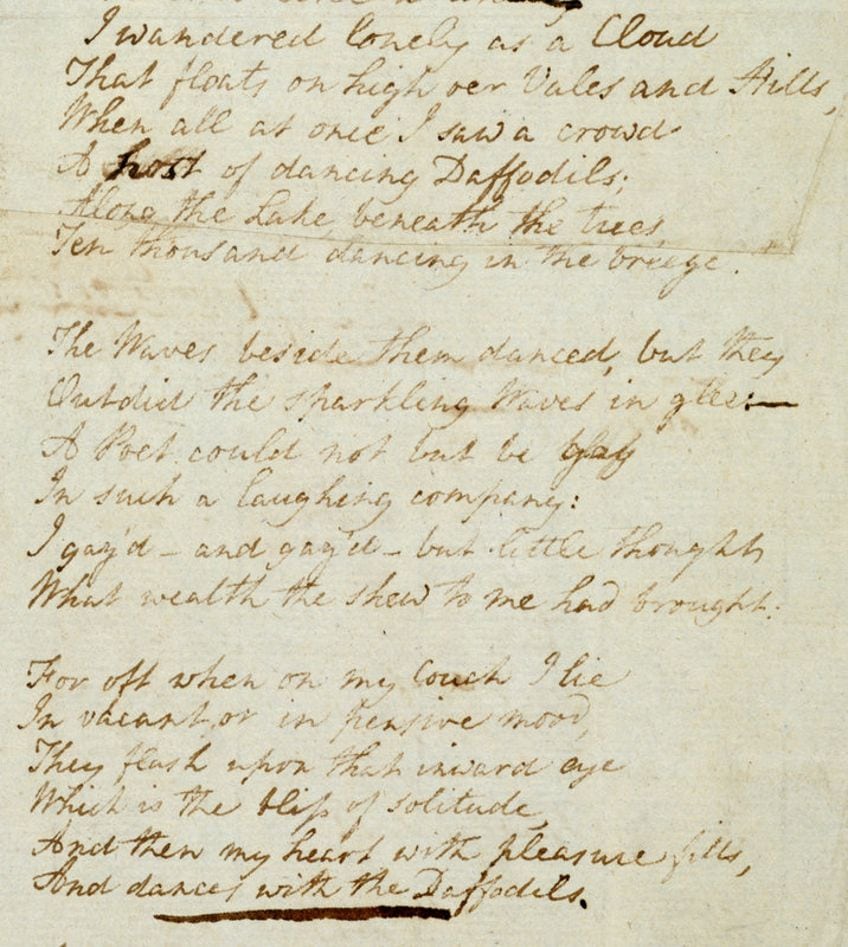
This poem, and its depiction of the natural world, is based on one of the walks that Wordsworth himself took while in the English countryside, and the central image of the poem, the daffodils, was present on that walk. They would have a major point of influence on Wordsworth later in his life. We are going to discuss a larger I Wandered Lonely as a Cloud analysis later in this article, but before we get to that point, we should first have a quick look at a summary of this text for those who may not have the time needed to get through the full analysis.
Summary of I Wandered Lonely as a Cloud by William Wordsworth
While it would be best to have a look at this analysis and discussion of I Wandered Lonely as a Cloud by William Wordsworth as a whole, there is not always the time for that.
So, for those who need a quick summary of the poem and some of the central concepts behind it, this should help:
- I Wandered Lonely as a Cloud is about the natural world. Like many Romantic poems, this one is an exploration of the natural world and the power found within it. The poem was inspired by a real walk that Wordsworth took when he was younger, and the image of daffodils that grew along his trail remained in his mind for years. This poem shows how these kinds of natural images can become embedded and become companions to us.
- I Wandered Lonely as a Cloud is an example of a lyric poem. Many of the poems that were written by the Romantics were concerned with emotions, and this poem is no different. As an example of a lyric poem, I Wandered Lonely as a Cloud by William Wordsworth wants to show us the feelings that can arise because of the natural world, and the effect that it has on us as a result.
- I Wandered Lonely as a Cloud did not achieve a good reception when it was first published. While this immensely famous Romantic poem has since become one of the best-known of all the Romantic poems, this was not always the case. It was, instead, a poem that received a rather harsh reception from critics at the time. Even fellow Romantic poets were often critical of it. It has weathered those criticisms to become one of the poems that typifies the Romantic movement.
Now that we have finished off our short summary of the poem and the analysis of it, we can move on with the rest of our discussion. We are going to start this discussion with a look at the man who wrote the poem in the first place.
Biography of William Wordsworth
| Poetic Movement | Romanticism |
| Years | 1770 – 1850 |
| Place of Birth | Cockermouth, United Kingdom |
| Known For |
|
William Wordsworth is generally perceived as one of the most consequential and influential English writers. He, along with Samuel Taylor Coleridge, are seen as the figures who helped to launch the Romantic Movement in English literature, and for that reason alone, he should be seen as an immensely influential and important figure. Many of the other famous Romantic authors may not have gotten their start had it not been for Wordsworth.
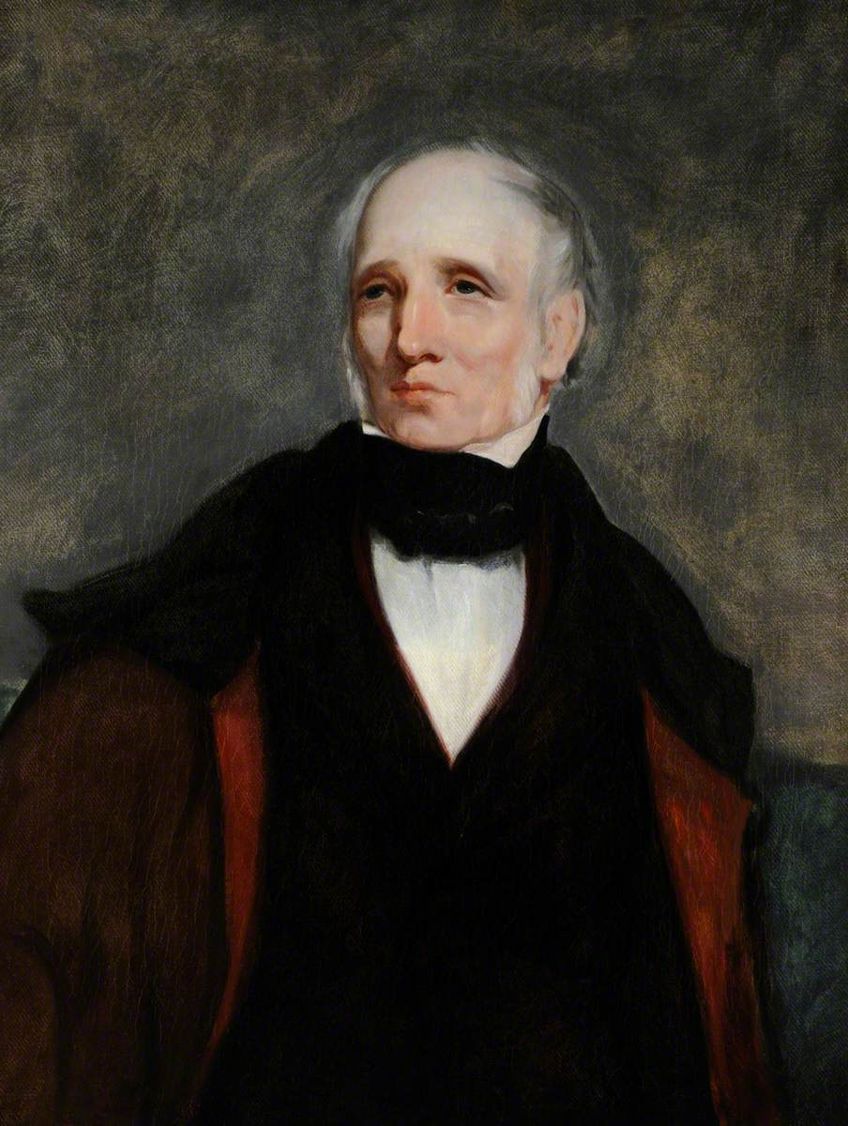
His work was often associated with the natural world and emotion. And while some of his poems, such as the one we are discussing today, took longer to be accepted by contemporaries, he was famous and influential in his lifetime. For instance, in 1843, he would become the Poet Laureate of England. He held onto this position until his death. The influence that Wordsworth exerted on English literature is one that cannot be understated.
An In-Depth I Wandered Lonely as a Cloud Analysis
I Wandered Lonely as a Cloud by William Wordsworth is a lyric poem and one of the best-known Romantic poems ever written. Over the course of this analysis, you may understand why this is the case. It is often seen as a typification of the movement’s usual goals and themes. However, before we dive into the content of the poem, what about the formal features? This poem is comprised of four sestet stanzas. This means that each of the stanzas has six lines. Each of these stanzas includes the same rhyme scheme. This rhyme scheme is laid out as ABABCC.
So, each stanza includes a quatrain of alternating rhyme, but it also makes use of a couplet rhyme at the end.
As for the metrical structure that is used in I Wandered Lonely as a Cloud by William Wordsworth, it is made up of iambic tetrameter lines. This means that each of the lines is made up of eight syllables, and each of those syllables is arranged in unstressed-stressed pairs. There are four of these pairs, and that makes the total number of syllables per line. These are the basic formal elements of the poem in question, but it is now time for us to dive into our proper in-depth I Wandered Lonely as a Cloud analysis that goes line-by-line and stanza-by-stanza.
Stanza One
I wandered lonely as a cloud
That floats on high o’er vales and hills,
When all at once I saw a crowd,
A host, of golden daffodils;
Beside the lake, beneath the trees,
Fluttering and dancing in the breeze.
We open with one of the most famous of all lines in all of Romantic poetry. It is also the title of the text. This particular line makes use of first-person narration, and so we know that this is from the specific experience of a speaker, and they have used a simile in their very first thought. This simile involves wandering like a cloud.
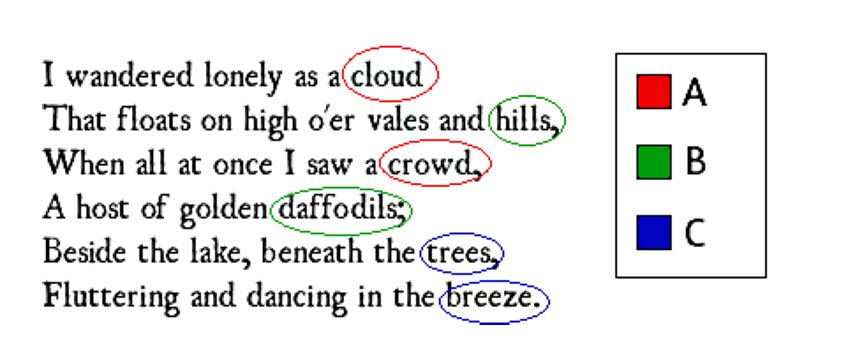
The implication of this is one of calm movement through the world. It also has a certain level of peacefulness and naturalness to it. A cloud does not move with any particular kind of purpose and instead moves through the sky as carried along by the wind. The speaker is attempting to create a direct connection with the natural world by being as the clouds above us all.
The second line simply reinforces the cloud idea, but the third and fourth lines introduce us to a major element of the poem. These two lines present us with the image of daffodils. There is a field of them, although they are personified as a “crowd” of daffodils. The next line simply states their position beside a lake and under some trees, but these serve to anchor the image of the daffodils in a particular setting. We have been introduced to this natural landscape within the first stanza, and the final line continues the use of personification to describe these daffodils as they are “dancing” in the wind.
The fixation on these daffodils for four of the six lines in this stanza should immediately indicate their significance to the message that the poem is attempting to convey to us.
Stanza Two
Continuous as the stars that shine
And twinkle on the milky way,
They stretched in never-ending line
Along the margin of a bay:
Ten thousand saw I at a glance,
Tossing their heads in sprightly dance.
This stanza remains affixed to the image of the field of daffodils. They are compared, in the first two lines, to stars and the galaxies above. They are seen as something that sparkles in the natural world and, by using this comparison, we can give these flowers a kind of mystical air about them. They are not simply flowers in this poem, but they have rather come to represent the natural world in a persistent way.

The next two lines are relatively simple in what it expresses to us as they state that the daffodils stretched out before the speaker in a “never-ending line”, and this does hold a comparison with the previous two lines. The galaxies above us are also never-ending, and they are a mysterious force that, especially at the time of the Romantics, is still unknowable in many ways.
The fourth line serves to place it in its setting once more. It simply states where the daffodils can be found, and it reminds us that they sit beside the lake. But the next line returns to the image of sheer, unending abundance by numbering the daffodils as ten thousand. This has been a repetitive reinforcement of the comparison between the stars above and the daffodils upon the earth.
The final line, once again, returns us to the personification of the daffodils as they are “tossing their heads” as they dance in the breeze.
This repetitive use of personification of these flowers also indicates the continuation of an idea. These daffodils are not simply flowers but are instead equated to beings that are present as the speaker stands before them. They are not simply inanimate objects, but a thing that is also living beside him.
Stanza Three
The waves beside them danced; but they
Out-did the sparkling waves in glee:
A poet could not but be gay,
In such a jocund company:
I gazed—and gazed—but little thought
What wealth the show to me had brought:
The first two lines of the third stanza jump back to the lake beside the daffodils. We have been continuously reminded about the existence of this lake, and so it is reaffirmed here. There is also a comparison made between the dancing daffodils and the waves on the large lake because they too are dancing. And, much like the daffodils, they also sparkle. The comparison between the galaxies above us and the daffodils has been transferred to the waves.
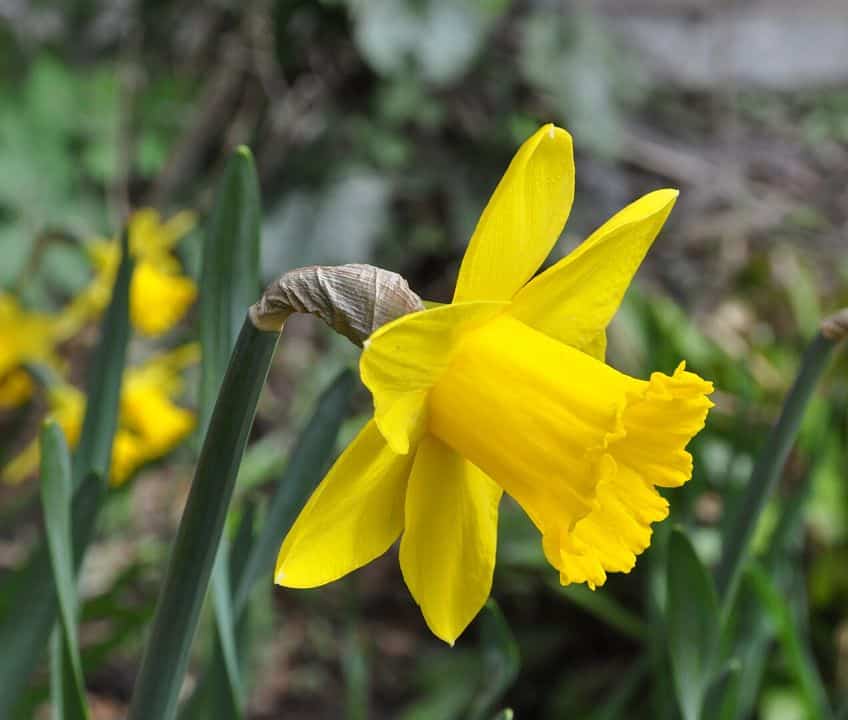
The next two lines jump back to the speaker. He refers to himself in the third person and states that a poet should be happy to be in such company. This is where the personification of the daffodils and then, by association, the lake beside it becomes of paramount importance. The natural world around the speaker is not simply a detached landscape, but rather a kind of person who stands beside the speaker as he journeys through this world.
The final two lines of the stanza reinforce the idea of the speaker gazing upon this natural sight. These final lines will become pertinent in the final stanza as he thinks that this natural landscape is simply that. He did not think that it would bring him all that much joy in his life and so he moved on.
He did not remain for all that long, but this image would become something that remained in his memory.
Stanza Four
For oft, when on my couch I lie
In vacant or in pensive mood,
They flash upon that inward eye
Which is the bliss of solitude;
And then my heart with pleasure fills,
And dances with the daffodils.
The final stanza of I Wandered Lonely as a Cloud by William Wordsworth opens with the speaker far from that beautiful natural landscape. Instead, the poet sits on his couch. He has nothing to do and then remembers. He remembers the wondrous solitude of that walk through the countryside, and he remembers the daffodils. Upon remembering it, his “heart with pleasure fills”.

The poem wants to provide us with the idea of memory being a thing of note to us as humans. Our memories, even when we have departed from the beautiful and wondrous things that we have seen and experienced in our lives, we can still remember those things. If we saw those dancing daffodils as the speaker did, we may just be filled with joy at the mental image of them years upon years later. And that has been our I Wandered Lonely as a Cloud analysis.
The Themes of I Wandered Lonely as a Cloud by William Wordsworth
When it comes to the themes of I Wandered Lonely as a Cloud by William Wordsworth, we have to look toward the natural world. This is the primary source of imagery that this poem presents to us. It wants us to see the natural world, such as the images of the lake and the daffodils, and the immense power that can be found in such a beautiful sight. Furthermore, the poem wants us to see a certain level of companionship with the natural world. The speaker is at first alone, but they soon realize that they are not entirely alone.
Furthermore, the images that the natural world provides to the speaker are those images that can be recalled far later in his life.
And so the persistent endurance of memory is another of the themes that I Wandered Lonely as a Cloud by William Wordsworth explores. Like many Romantic poems about the natural world, it also holds a certain sense of celebration. The natural world is one that the Romantics preferred over the urbanization that was occurring at the time and, as such, the natural world is posited as a force for healing. It is a place where humanity can recover from what it is experiencing with the rise of the city and the decline of nature.
The Changing of Critical Reception to I Wandered Lonely as a Cloud Over Time
It can be strange for us to think now, thanks to the ubiquity of this poem when it comes to any collection of Romantic poetry, to think that it was universally acclaimed when it was released. But this wasn’t the case with this text. Instead, when I Wandered Lonely as a Cloud by William Wordsworth was first published, it, and the collection of which it was a part, was very poorly received.
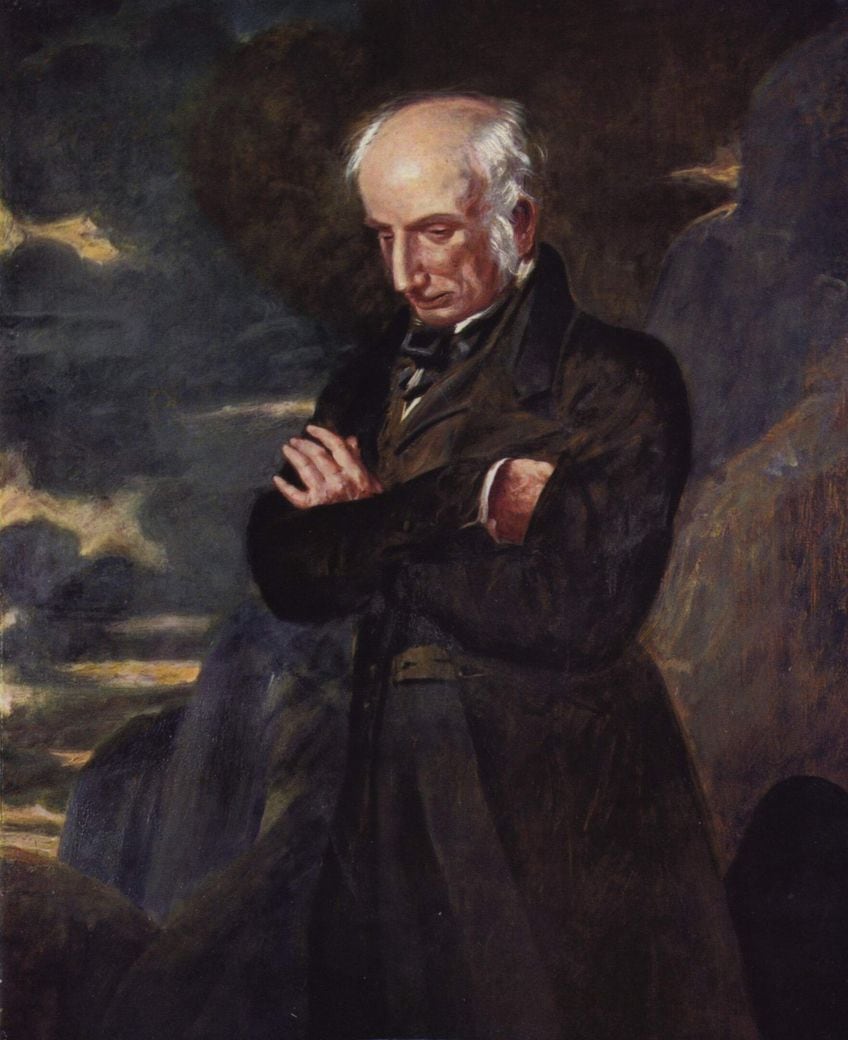
Even Lord Byron gave a negative review, and Wordsworth actively tried to influence how some outlets reviewed the work, but to little avail. However, the collection, and this poem, started to gain traction a few years after publication and public opinion eventually won out over the critical reception of the period. In the decades after it was released, it would come to be seen as one of the greatest examples of Romantic poetry. This is a reputation it has upheld to this day, and so the negative reception did not last. However, it can appear strange that this was the case when the poem was first released to the public.
With these final points about our I Wandered Lonely as a Cloud analysis and discussion, we have reached the conclusion. Today, we discussed this poem alongside the poet who wrote it, some of its central themes, and the changing of its critical reception over time. I Wandered Lonely as a Cloud by William Wordsworth is one of the best-known and most beloved of all the Romantic poems, but Wordsworth did write many other poems that are also worth a read!
Frequently Asked Questions
What Is I Wandered Lonely as a Cloud by William Wordsworth?
This is a poem by the influential Romantic poet, William Wordsworth. It is a poem that explores a walk through the countryside in which a field of daffodils plays a central role. The poem was also inspired by a real walk that Wordsworth once took, and the daffodils in question were present on that walk as they remained in his memory.
Who Was William Wordsworth?
William Wordsworth is one of the most important and influential Romantic poets. He, alongside Samuel Taylor Coleridge, are seen as the English-language founders of Romanticism. His work would come to be seen as some of the quintessential examples of Romantic poetry ever produced, and much of his work was characterized by a dedication to emotion and the natural world.
What Type of Poem Is I Wandered Lonely as a Cloud by William Wordsworth?
This is a lyric poem. This type of poetry is a very broad category that entails the use of emotion from a personal perspective. I Wandered Lonely as a Cloud by William Wordsworth is a great example of a lyric poem because it explores his thoughts and feelings as he interacts with the natural world.
What Are the Themes of I Wandered Lonely as a Cloud by William Wordsworth?
The central themes of this poem revolve around nature and memory. The natural world is seen as a companion to the speaker as he wanders through it, and the memory of the daffodils remains long after he has left them behind. These kinds of ideas are common in many examples of Romantic poetry, but they are expressed strongly in this poem and, as such, this poem has become one of the most influential examples of this style of Romantic poetry.
What Are Some of the Other Famous Poems by William Wordsworth?
William Wordsworth wrote many poems over his career, and many of them are considered to be some of the best in the Romantic era. Some of his best-known poems include She Dwelt among the Untrodden Ways (1798), Lucy Gray (1799), and The World Is Too Much with Us (1802). However, he wrote far more poems than the few that have been mentioned in this answer.
Justin van Huyssteen is a freelance writer, novelist, and academic originally from Cape Town, South Africa. At present, he has a bachelor’s degree in English and literary theory and an honor’s degree in literary theory. He is currently working towards his master’s degree in literary theory with a focus on animal studies, critical theory, and semiotics within literature. As a novelist and freelancer, he often writes under the pen name L.C. Lupus.
Justin’s preferred literary movements include modern and postmodern literature with literary fiction and genre fiction like sci-fi, post-apocalyptic, and horror being of particular interest. His academia extends to his interest in prose and narratology. He enjoys analyzing a variety of mediums through a literary lens, such as graphic novels, film, and video games.
Justin is working for artincontext.org as an author and content writer since 2022. He is responsible for all blog posts about architecture, literature and poetry.
Learn more about Justin van Huyssteen and the Art in Context Team.
Cite this Article
Justin, van Huyssteen, ““I Wandered Lonely as a Cloud” by William Wordsworth – Analysis.” Art in Context. December 1, 2023. URL: https://artincontext.org/i-wandered-lonely-as-a-cloud-by-william-wordsworth/
van Huyssteen, J. (2023, 1 December). “I Wandered Lonely as a Cloud” by William Wordsworth – Analysis. Art in Context. https://artincontext.org/i-wandered-lonely-as-a-cloud-by-william-wordsworth/
van Huyssteen, Justin. ““I Wandered Lonely as a Cloud” by William Wordsworth – Analysis.” Art in Context, December 1, 2023. https://artincontext.org/i-wandered-lonely-as-a-cloud-by-william-wordsworth/.





